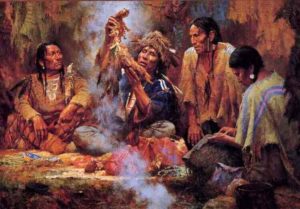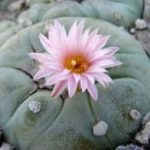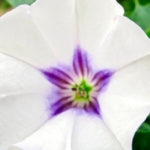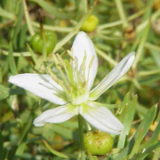Plants Used in Native American Rituals

Plants Used by Native Americans for Ceremony or Ritual
The Native American tribes have many recipes and tonics which use different plants for medicinal or ceremonial purposes. The various Indian tribes across the United States (and North America), sometimes employed these plants differently and for different psychoactive purposes. Some ceremonies restrict the use of the herb to shaman, medicine men or priests only. Then there are some plants which are used in Native American ceremonies or rituals by everyone (whether for spiritual or recreational purposes). Exploring the use of these psychoactive plants reveals the range of effects from being ‘medicinal’ to ‘full-on hallucinating intoxicant.’
List of Psychoactive Plants Used by Native American Indians
Although the Native Americans took advantage of many botanicals in their medicines, spices and ceremonies, some are more widely used or far more notable than others. This is a list of the most commonly used (or more notable) of the many psychoactive plants implemented by Native American Indians across North America.
Genista
Genista, or Cytisus canariensis, is native to the North American area and has been well known by man Native American tribes for its psychoactive properties. It has been especially popular among Native American medicine men and is included in a variety of medicinal ceremonies.
 Maiden’s Acacia
Maiden’s Acacia
This special Acacia is very prevelant in traditional Native American medicine. It is used in Ayahuasca analogs and in conjunction with other plants for various hallucinogenic or psychoactive uses. It is found used by medicine men and shaman alike in a number of Native American tribes.
Mescal Beans
Mescal Beans, or Sophora secundiflora, can date historical usage back as far as nine thousand years ago. In North America, the Arapaho and various Iowan tribes in the U.S. have used the beans for centuries. The beans are commonly used as a safe hallucinogen for their “Red Bean Dance” rituals. It is also used for story telling.
Nutmeg
Also known as Myristica fragrans, Nutmeg is known to many Indian ultures throughout North America for its narcotic properties. It has been employed in a variety of ceremonies, and is sometimes combined with other plants. Admittedly, Nutmeg was and is more commonly used in other territories around the world.
 Peyote
Peyote
Peyote is a sacred cactus that can induce realistic visual hallucinations. It is still used today by Native American tribes and is protected for use by members of the Native American Church in the United States and Canada, despite its illegal status in America. Admittedly, Peyote is more commonly employed in Mexico, where it can be found growing in greater abundance. Still, it has many religious purposes and can be found in a variety of ceremonies, rituals and vision-quest practices.
Saguaro
Aka Carnegiea gigantea, this cactus grows in the Southwest United States (and Mexico). It has been an important medicine to Native Americans and is very popular for treating rheumatism. The fruit is usually what is valued, though various parts of the plant have proven capable of psychoactivity. This plant is used in a number of ceremonies throughout Native American tribes.
Sweet Flag
Mostly used by Native American tribes of Northern United States and Indians of Canada (especially the Cree), Sweet Flag helps with anti-fatigue, minor pain relief (such as against toothache and headache), and for treating asthma. Typically the roots are chewed. The plant has been used in a number of religious ceremonies as well, as it produces effects similar to LSD.
Tobacco
The tobacco plant is one of the most commonly employed ceremonial plants by the Native American Indians. They smoked this plant in pipes, in cigarette form and in smoke houses for a number of ceremonies and rituals. Sometimes, tobacco is combined with other plants that are also used in ceremonies or religious rituals.
 Toloache
Toloache
Also known as Toloatzin, or its scientific name, Datura stramonium. Toloache is most commonly employed by tribes in Southwest America (especially the Zuni), although it was also known by the Aztec. It is a strong hallucinogen, but has also been implemented for many medicinal purposes. It is used by many priests and shaman of the various Indian tribes of the area. It has many spiritual purposes and is considered a truly sacred plant.
Final Words: Psychoactive Plants and Native Americans
There are many other plants (both hallucinogenic and merely psychoactive) which are used throughout the Native American tribes of North America. Many of these plants can also be found in their religious ceremonies or rituals, however, they are less prevalent and far less significant than these above mentioned, sacred plants. In fact, thanks to these plants, Native American tribes have almost always employed psychoactive plants, and they are still employed to this very day.




